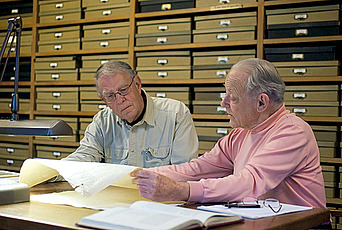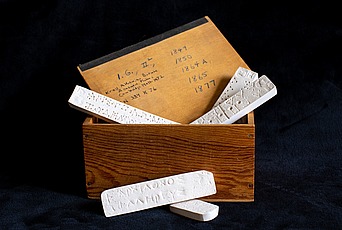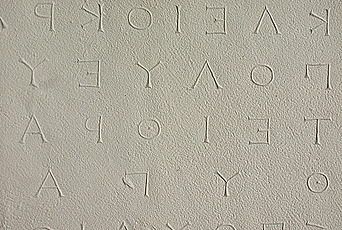Casting a New Light on the History of Archaeological Research at IAS
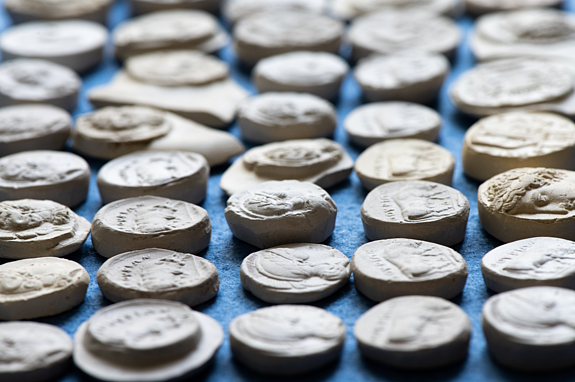
The role of reproductions in facilitating the study of the ancient Mediterranean has long been recognized at IAS. Upon his appointment as the Institute’s first professor of Greek epigraphy in 1935, Benjamin D. Meritt petitioned then-Director Abraham Flexner to create a collection of “squeezes”: paper reproductions that recorded the text of ancient Greek inscribed stones. An epigraphic library comprising nearly thirty thousand copies of inscriptions was the result, a collection that is further supplemented by photographic records of inscribed stones excavated at the Athenian Agora. Until relatively recently, the majority of the Institute’s reproductions were believed to be of this paper variety; however, a recent find in the epigraphic library has quite literally lifted the lid on a whole new collection of copies.
In their ongoing work to catalogue and digitize the Institute’s squeezes, Dr. Aaron Hershkowitz and Dr. Esen Ogus of the Krateros Project made a surprising discovery: inside a battered box believed to contain squeezes, they uncovered more than one hundred plaster casts of ancient coins. The coin casts were nestled in the box alongside a mix of scrap paper, photograph cutouts, and other ephemera, and secured in place by a thick wadding of fiberglass. They had to be meticulously cleaned before any research into their origin could take place. Fortuitously, the casts were uncovered just days before the arrival of a new Visitor to the Institute’s School of Historical Studies: myself! I had just submitted my Ph.D. thesis on plaster reproductions of another variety —a collection of casts taken from famous ancient Greek and Roman sculptures, held at the Ashmolean Museum of Art and Archaeology in Oxford, England—and was delighted to lend my expertise to the project.
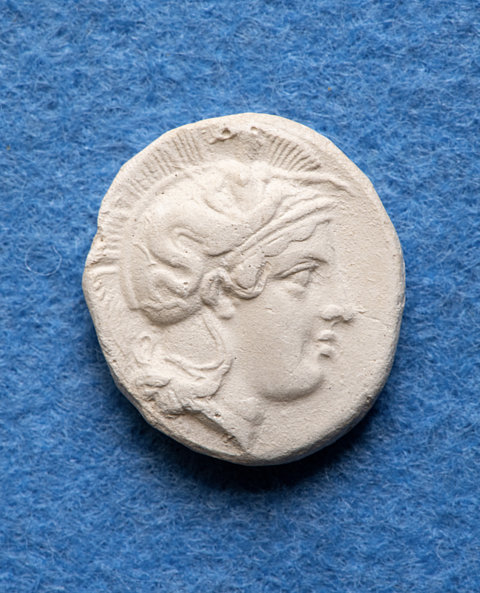
The miniature plasters reproduce coins from across the ancient Mediterranean; some were originally produced in Lucania, southern Italy, others at Ephesus on the coast of Turkey, and more still in Syracuse on the island of Sicily. The original coins were minted at the behest of some of the ancient world’s most famous figures, including Augustus, Rome’s first Emperor, and Philip II of Macedon, the father of Alexander the Great. Some are of interest for their mythological imagery: one cast reproduces a coin that features the goddess Athena with the sea-monster Scylla (described in Homer’s epic poem The Odyssey) positioned atop her helmet. Another particularly detailed example preserves an image of a four-horse chariot known as a quadriga, driven by a charioteer who brandishes a goad. Nike, the personification of Victory, is shown flying toward him with a crown.
That such detailed imagery was depicted on ancient coins measuring just a few centimeters across is already an impressive technological achievement, and that this same imagery has been so precisely replicated using plaster is equally remarkable. The success of the replication is a consequence of the cast-making technique. They were likely created using clay molds: each original ancient coin would have been pressed into a smooth piece of clay in order to make an exact impression. The coin would then be extracted from the clay and a small amount of liquid Plaster of Paris would be poured into the resulting cavity. Once the plaster had been left to set, the clay would be peeled away, leaving a 1:1 plaster reproduction of the coin’s imagery in its place. Each cast preserves one face of an ancient coin, with two separate casts being required to duplicate each coin in its entirety. On a cast representing the Emperor Augustus, one can even identify how the ancient die used to strike the image onto the original metal disk slipped during the minting of the coin. As a result, the design is not centrally aligned on the disk but off-center, leaving a large section on the right-hand side of the coin blank. The plaster cast replicates this perfectly. Near-perfect replication is not unusual: research published in 2019, which involved the 3D scanning of both original marble sculptures from Athens’ Parthenon and plaster casts created from them, revealed that the latter replicated the former to within a millimeter of accuracy.
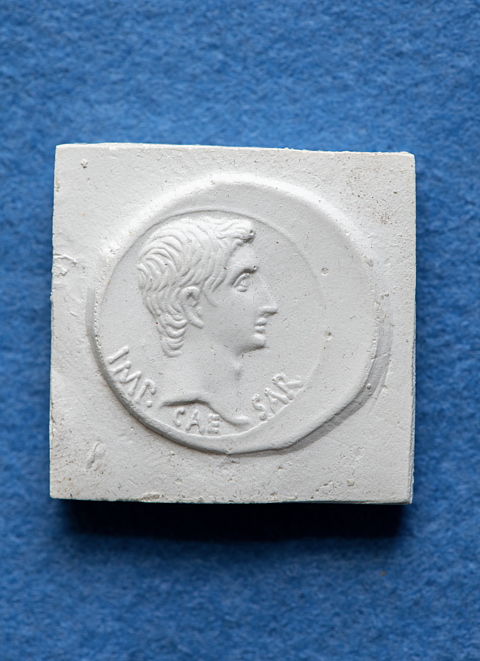
Upon discovery, many of the IAS casts were without identification; however, some of them were accompanied by a scant amount of documentation, giving me a starting point for tracking down their precise original referents. A few plasters were adhered to index cards, labelled with details of the original coin’s weight and the museum collection in which they were housed at the time of casting. Some of the coins still reside within those same museum collections (I saw some of the originals on display during a visit to the Penn Museum, Philadelphia). However, the vast majority of the casts were undocumented. The few clues that were available have allowed me to develop an understanding of the objects’ use and significance.
Also preserved alongside the casts was an envelope addressed to Professor Paul A. Clement at Johns Hopkins University, Baltimore. The envelope is a fascinating piece of history in its own right, attesting to the political climate in 1930s Germany on the eve of World War II. It bears a Briefstempel (letter stamp) from the Berlin’s Akademie der Wissenschaften (Academy of Sciences) that is complete with Nazi symbolism: an eagle clutching a sword and a pair of lightning bolts. The name “Berlin” is flanked by a pair of swastikas. It is unlikely that casts were transported in this envelope, however: a note at the top reveals that Professor Clement had received a delivery of photographs, not plaster reproductions, from the Academy. Nevertheless, the presence of Professor Clement’s name on the envelope was immensely helpful in identifying some of the casts. After initially joining the Institute as a Member in the School of Historical Studies from 1938 to 1949, Clement continued as a frequent Member in the 1950s. In 1938, he published a volume alongside colleague Professor David M. Robinson in which he catalogued the ancient coins discovered at the site of Olynthus in ancient Macedonia. Many of the coins illustrated in the volume are represented in the cast collection. I have been engaged in the lengthy task of comparing the cast coins to those illustrated in the volume in order to attribute the reproductions to their originals.
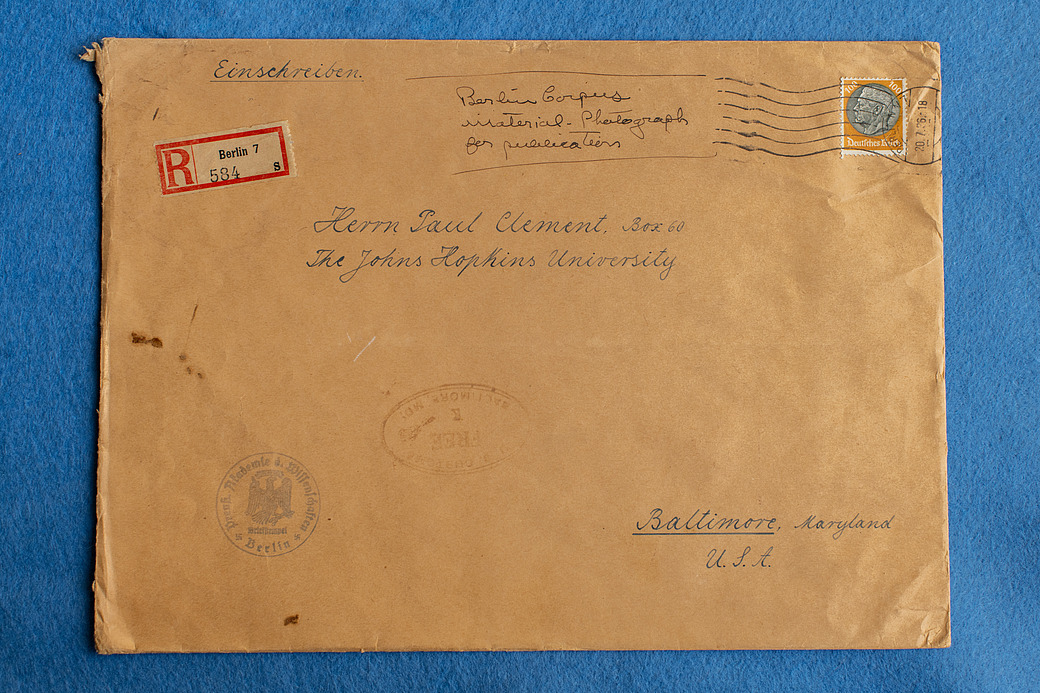
The reproductions likely allowed Clement to draw comparisons between original coins that were not immediately available to him, enabling him to carry out his analysis without making in-person visits to museums and private collections across the globe. Even after photography became the most popular method for documenting archaeological finds, casts were still very useful for this kind of study as they reproduced their originals at 1:1 scale, unlike photographs which can distort the scale of objects when viewed in isolation. Casts also possessed another advantage: when photographing coins for use in publications, casts were preferable over the shiny metal originals because their less reflective plaster surfaces were easier to illuminate.
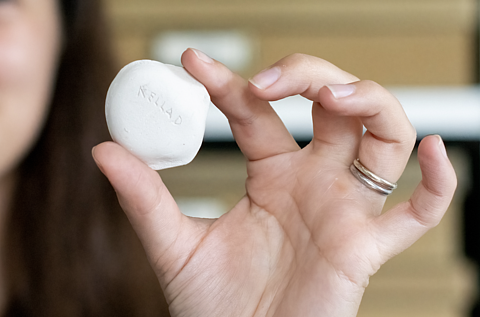
Although the casts likely fulfilled an important role in his research, Professor Clement is unlikely to have had a hand in making the objects himself. The variable quality of the casts’ workmanship and the many different types of plaster used indicates that they were not the work of a single maker. Instead, they were made by the private collectors and museums that held the originals. These individuals and institutions are acknowledged by Clement in the preface to his publication. Some of the private collectors made an even more direct note of their contribution, inscribing their names on the reverses of the casts that they produced. Other casts even preserve the fingerprints of those who made them.
While the casts might initially seem small and insignificant, the Institute is very lucky to have these objects in their collection. In the early twentieth century, plaster casts of ancient subjects were removed from display at many major museums. At this time, reproductions in general were perceived as lacking in value compared to original objects. Many casts were left to disintegrate in dank warehouses or were even deliberately destroyed. The Institute’s casts are fortunate survivors of this tumultuous time.
Today, scholars are beginning to recognize the significance that casts hold as historic objects in their own right, and reproductions are enjoying something of a renaissance. In 2018, the plaster cast courts at London’s Victoria & Albert Museum reopened with great fanfare, and Chroma, an exhibition that is currently on display at the Metropolitan Museum of Art, New York, presents brightly painted 3D-printed reproductions of ancient statues to give an impression of their original polychrome appearance. I view the casts not as mere copies but as fascinating historical documents that can enhance our understanding of how the study of classical antiquity has developed over time.
The coin casts featured here, and the reproductions of ancient pinakia described in the Spring 2022 Institute Letter, are currently the subject of a pop-up exhibition titled Original Copies?, available to view in Fuld Hall.
Abbey Ellis is a past Visitor (2021–22) and Research Associate (2022) in the School of Historical Studies. She has a background in Classical Archaeology, gaining her Bachelor’s and Master’s degrees in the subject from the University of Oxford. She graduated with her Ph.D. in Museum Studies from the University of Leicester in 2021.
